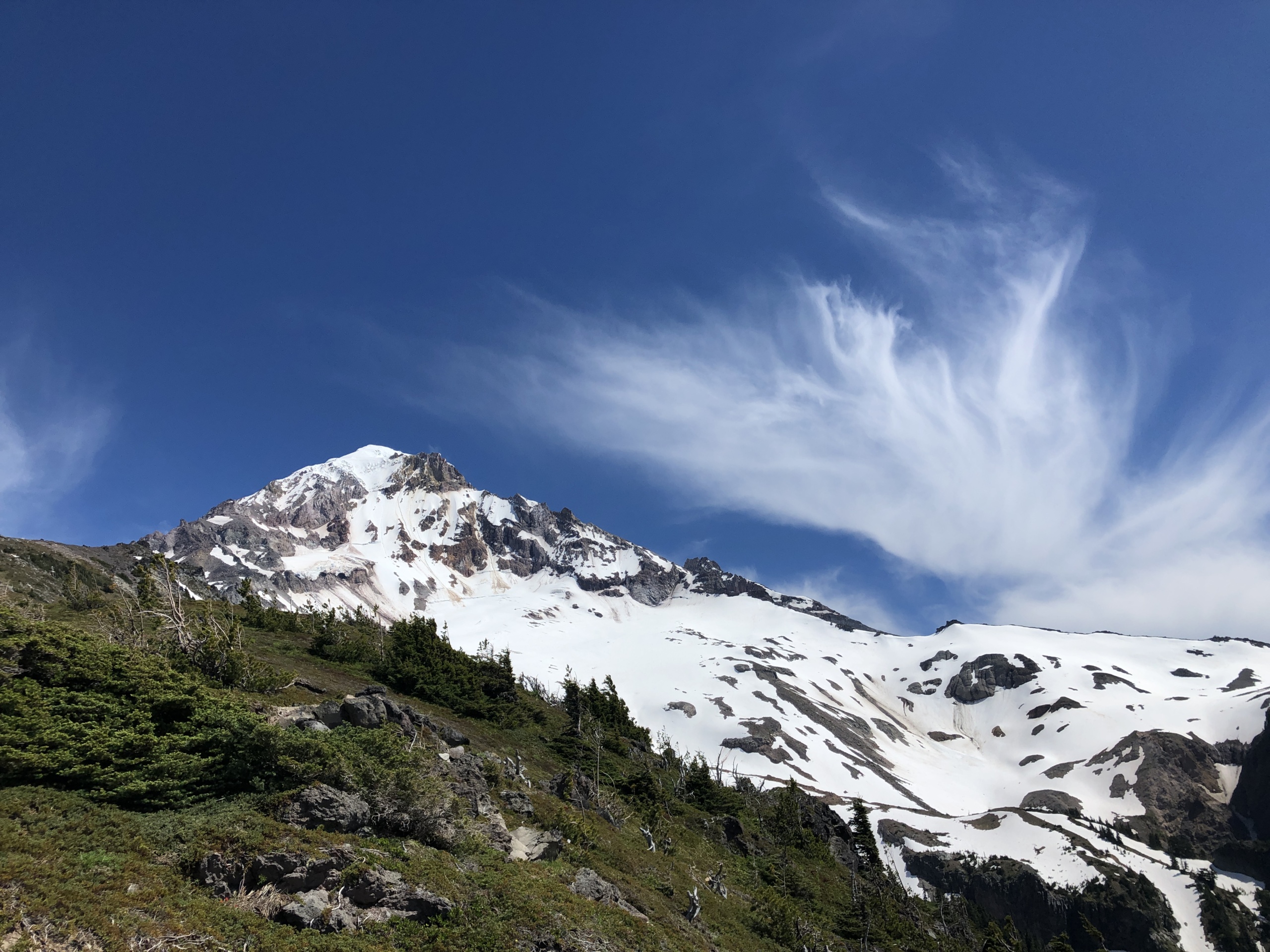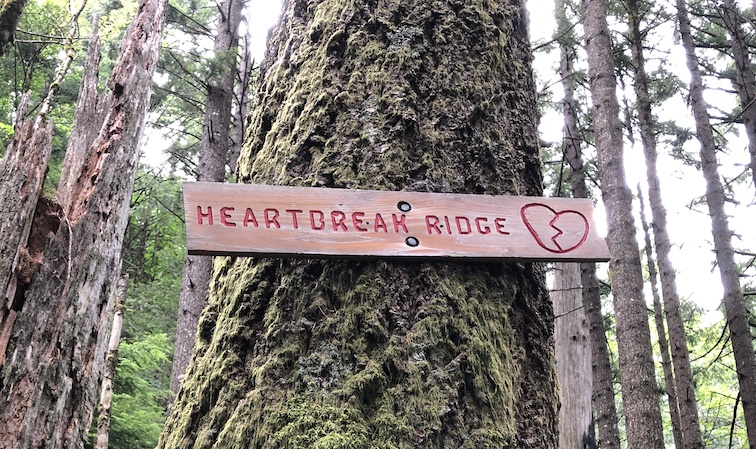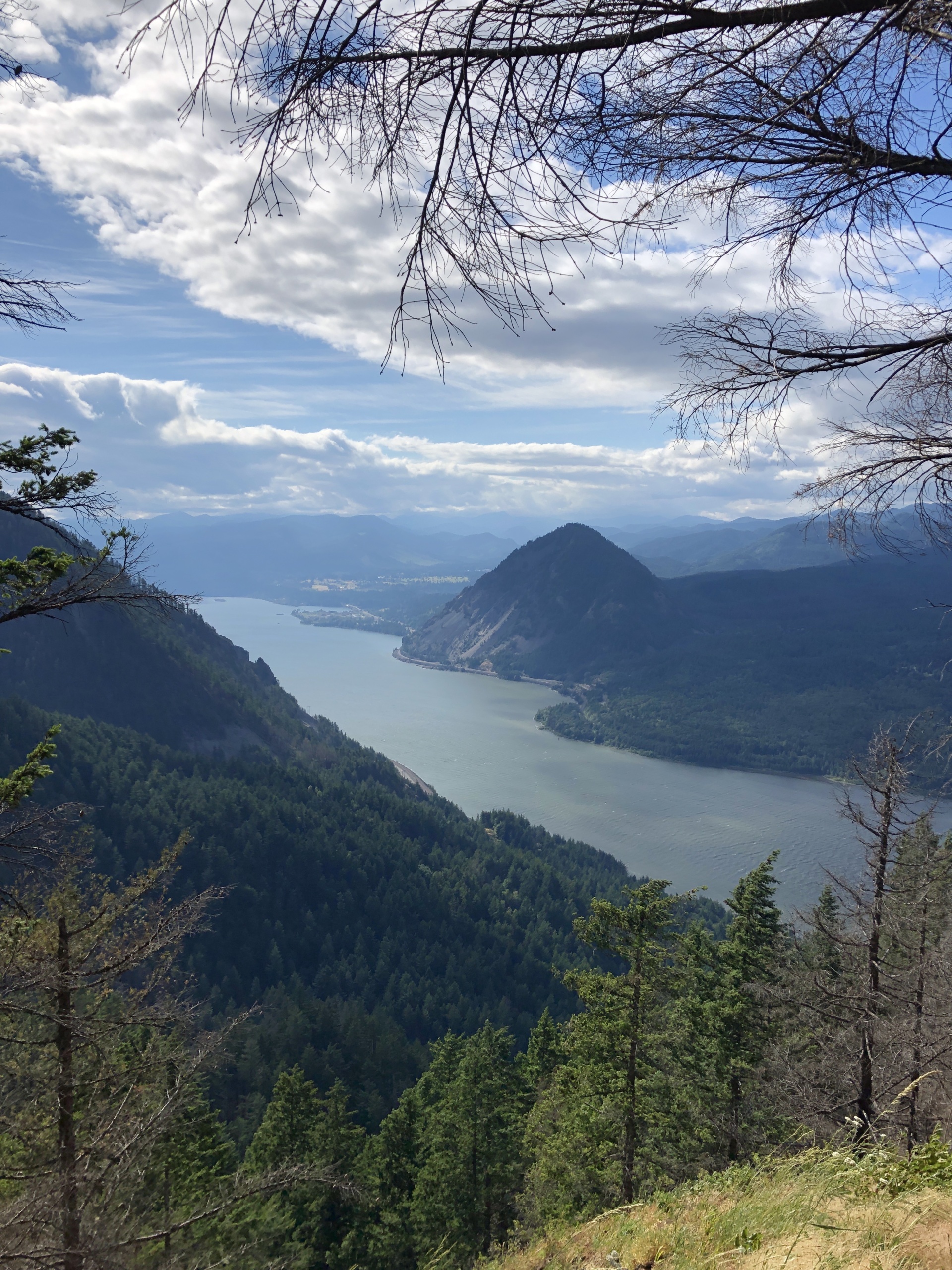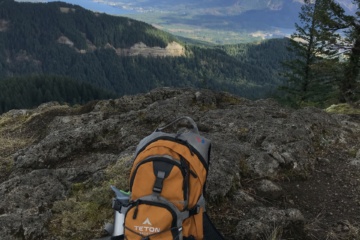In 2018 I set a personal goal of climbing Mount Saint Helens. I was a pretty avid hiker at that point, but I had never climbed a mountain. I knew I had to get in better shape so I came up with a training plan. I’m a nerd so naturally I created a spreadsheet to track my hikes each weekend, including the distance and elevation gain.
After I successfully summited Mt St Helens in 2019, I revisited that list to think about which hikes had been the most beneficial in my training. These are the 3 hikes that helped me not only successfully hit my goal of climbing a mountain, but actually made it seem easier than I expected.
McNeil Point via Ramona Falls

There are a lot of great, challenging hikes in the Mt Hood National Forest, but this one is awesome if you’re training to climb Mount Saint Helens. The AllTrails link above starts at Top Spur trailhead, but my favorite is to start at the Ramona Falls Trailhead. It’s much easier to get to and there’s plenty of parking. It also turns this into a 15 mile hike, includes a beautiful waterfall, and lets you start and finish with a fairly easy section of hiking.
Shortly after you pass Ramona Falls you hop over to a section of the Pacific Crest Trail where it gets more difficult. Depending on the time of year you might encounter some patches of snow too. One of the reasons I chose this as a training hike is because there’s a section near the top that is incredibly steep, rocky, and dusty. It reminds me of the last push up to the summit of Mount Saint Helens, although that one is mostly ash.
If you want a training hike that includes waterfalls, a snow-capped mountain peak, and plenty of distance, this is a great choice. You can read more about the Ramona Falls section of the trail, or hiking to McNeil Point via another trailhead, by checking out this post: 5 Amazing Hikes In Mount Hood National Forest.
Table Mountain

Another great training hike, the longest of these 3, is Table Mountain. At 16.4 miles and 4300 feet of elevation gain, this hike is no joke. I started from the Bonneville Trailhead which takes you down a short trail that merges into the PCT. About 2 miles after that you come to a lake with a few primitive campsites that are a great place to stop for a rest. I love to throw up a hammock and relax for a while.
Once you pass the lake, the elevation starts increasing and eventually you come to a split where the rest of the trail becomes a loop. The west side has some nice views, but also a steep, unshaded section full of scree. So be ready to go a little slower to keep your footing.
The east side includes a section named Heartbreak Ridge. This is by far the steepest part of the trail and aptly named! Go slow, take breaks, and drink plenty of fluids. Not long after that, you’ll get to a boulder field that is like a smaller version of the boulders you’ll navigate when you climb Mount Saint Helens.
As you near the top you’ll be treated to fields of wildflowers and an amazing view. A lot of hikes have one primary “view”, but this one has so many amazing spots. Be sure to start this hike early so you have plenty of time to rest and take in the views along the way.
Mount Defiance

The most popular training hike is Mount Defiance and for good reason. It’s a beast! It has 500 more feet of elevation gain than Table Mountain despite being 4 miles shorter. Needless to say, your legs are going to be burning on this one. When it comes to sheer endurance and elevation gain, this hike is a great readiness test for Mount Saint Helens.
This hike is actually a loop that combines two trails. You’ll start on a paved path from the trailhead and soon come to the start of the Starvation Ridge trail on your left. It’s so steep it almost doesn’t even look like a trail at first glance. When you finish climbing you’ll be rewarded with a beautiful lake that is a perfect spot to relax and refuel. I like to take a hammock with me and enjoy the peacefulness of the lake.
The second half of the hike brings you down the Mount Defiance trail. It’s a steep trail and it can be hard to keep your footing at times because of the loose rocks. It also includes a section that burned during the 2018 Eagle Creek wildfire. That means you’ll find some ash on the trail and sad scenery of partially burned trees. There are several breathtaking views of the Columbia River from this side, and at least 1 view of Mount Saint Helens. Eventually, you’ll find yourself back on the paved path at the bottom with a short, flat finish back to the trailhead.
I’ve hiked the loop in both directions and it’s challenging either way. My favorite route is to go up the Starvation Ridge trail, and down the Mount Defiance trail. The Starvation Ridge trail will test your legs with the steep terrain and relentless switchbacks. The Mount Defiance trail tests your footing and has a couple of small waterfalls that give you a chance to filter some extra water if you misjudged how much you would need for this hike.
Conclusion
To be clear, these hikes will over-prepare you for climbing Mount Saint Helens. You can absolutely do easier hikes and be just fine on your climb. But then you’d miss out on these amazing training hikes and the views they offer. And honestly being too prepared made my climb even more enjoyable. I didn’t have to be worried about whether we would finish before dark. Or if my wife would call in search and rescue (yes, she totally would). I got to focus on my accomplishment and the amazing views from the top.


0 Comments